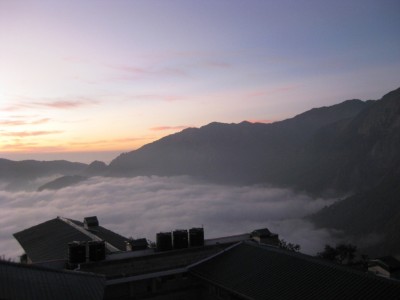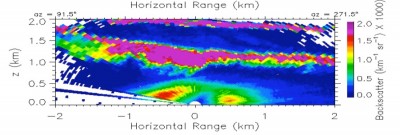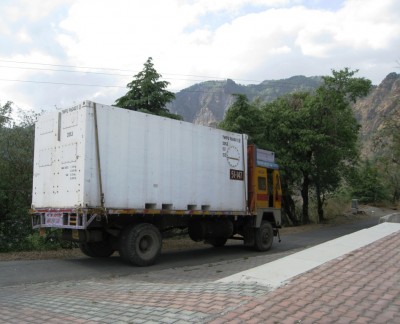ARM Mobile Facility Completes Aerosol Campaign in India
Published: 10 May 2012
First-ever Indo-U.S. collaboration for climate research sets stage for future joint scientific endeavors

On March 31, the ARM Mobile Facility stationed at Nainital, India, completed its 9-month deployment for the Ganges Valley Aerosol Experiment (GVAX). This campaign was the first Indo-U.S. collaborative project to obtain continuous measurements of atmospheric state, energy budgets, clouds, and aerosol properties within India. These data will allow researchers to study aerosol effects in the region, and whether they might be drying up clouds that provide moisture to the Ganges River, which millions of people rely on every day.
Working closely with colleagues from the Indian Institute of Science (IISc) and from the Aryabhatta Research Institute of Observational Sciences (ARIES), AMF1 operations started in June 2011. While some technical challenges were encountered, the AMF gathered a comprehensive set of measurements during pre-monsoon, monsoon, and post-monsoon periods in the central Gangetic plain.
Shortly before the campaign’s conclusion, researchers involved in GVAX presented preliminary results at the Atmospheric System Research Science Team Meeting in Crystal City, Virginia. Highlights included measurements of the subtropical jetstream over the Ganges Valley region; cloud cover and cloud heights for the monsoon period; and water vapor profiles through the various seasons.

In addition, aerosol instruments captured measurements of aerosol optical depth ranging between 0.1 and 0.7, as well as frequent events that included large particles and aerosols with absorption properties lower than anticipated. Specifically, measurements from Doppler and micropulse lidars indicate that aerosol distribution could be much more localized than previously assumed and also confined to thin layers of a few hundred meters in the lower atmosphere.
“Most models either assume uniform distribution of aerosols in the lower part of the atmosphere or that all the aerosols are above the atmospheric boundary layer with a smooth decay,” said Rao Kotamarthi, principal investigator for the study from Argonne National Laboratory. “In addition, most ground-based measurements provide a column abundance of aerosols with very few details about the vertical distribution of the aerosols that would produce localized heating of the atmosphere. We now have data that show significantly distinct heating profiles from aerosols in the atmosphere.”

Thorough analysis of the data will occur in the coming years by the research teams in India and the United States. Meanwhile, the AMF returns to the United States after many years supporting field campaigns abroad. Its next deployment is at Cape Cod National Seashore in Massachusetts for the Two-Column Aerosol Campaign, or TCAP, scheduled to begin in July.
The ARM Climate Research Facility is a DOE Office of Science user facility. The ARM Facility is operated by nine DOE national laboratories, including .
Keep up with the Atmospheric Observer
Updates on ARM news, events, and opportunities delivered to your inbox
ARM User Profile
ARM welcomes users from all institutions and nations. A free ARM user account is needed to access ARM data.


















